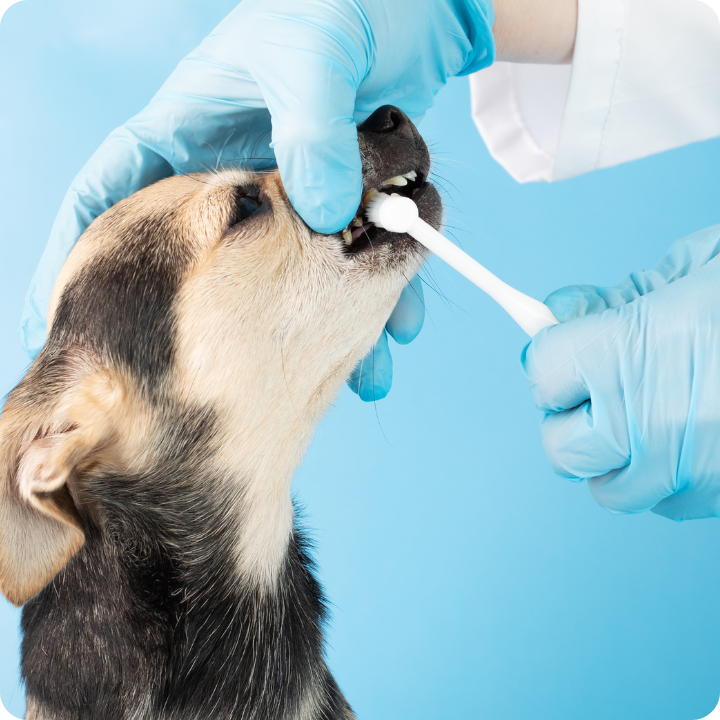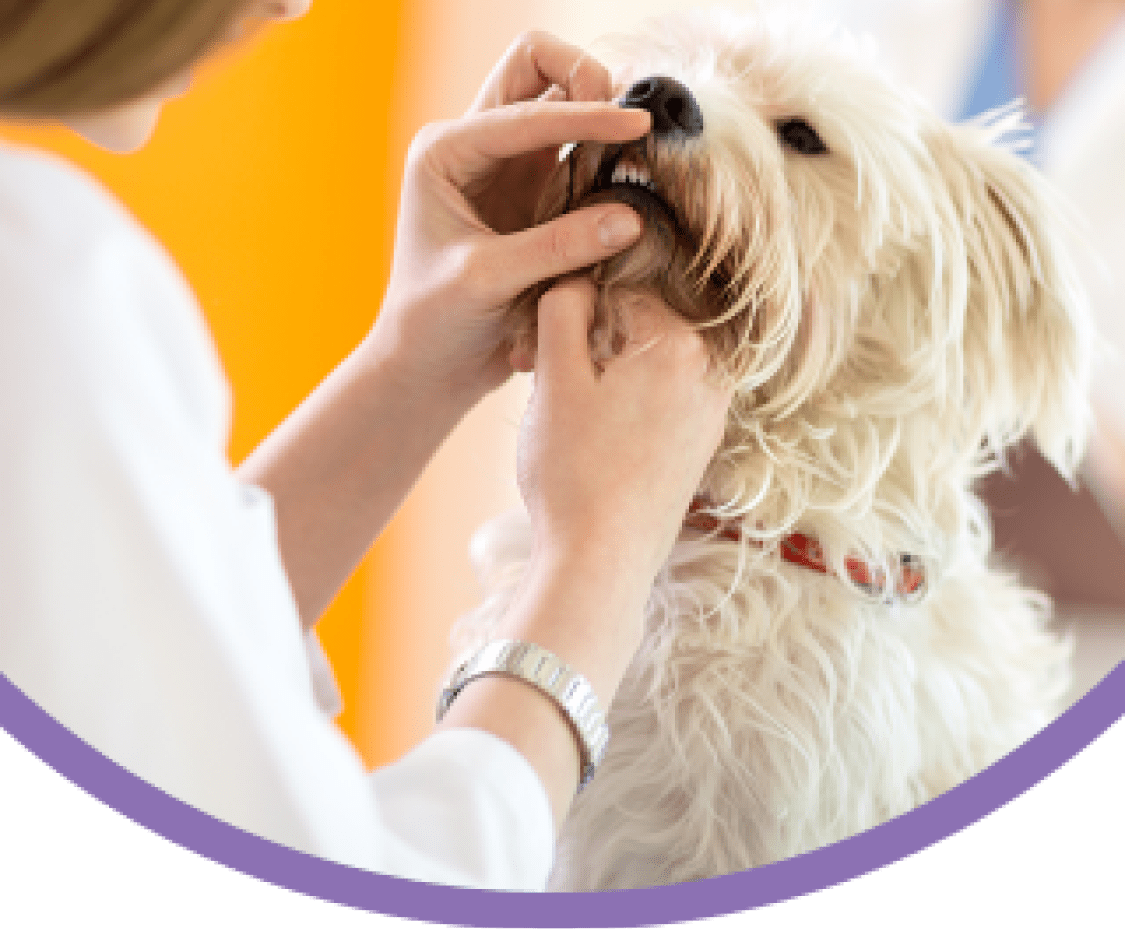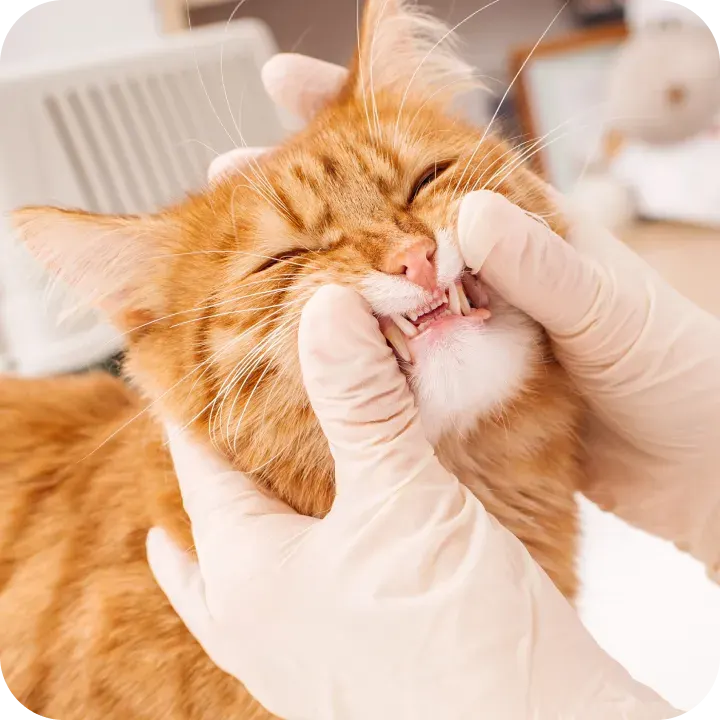
Know the Signs of Pet Dental Disease
Cat and dog bad breath should never be ignored, but it’s also important to know it’s not the only indicator that your pet may have oral health issues. Symptoms of dental disease may include bleeding gums, drooling, brown or yellow crust on the surface of teeth, or changes in chewing habits.
80% of dogs and 70% of cats show symptoms of dental or periodontal disease by the age of three.
Now, before you schedule your pet’s teeth cleaning, you’ll want to read this article to find out how much you can expect to pay and how pet insurance and preventative care coverage may be a gamechanger in managing your furry companions’ teeth expenses.

